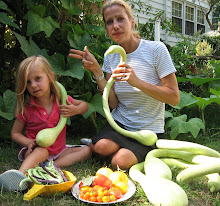When I came up with this meatless Lent venture, I mentally vowed not to depend on soy protein.
I worry about the isoflavones that mimic estrogen in women and don’t want my five-year-old daughter developing at age six. Seriously. When my mother was diagnosed with ovarian cancer in 2004, the first thing her doctor asked her was, “Do you eat a lot of soy?” The answer was “No, not any, really.” [Mom made it through fine.] One of my daughter’s and husband’s favorite snacks is edamame, in or out of the pod. Toasted, salted soy nuts are another favorite for both, although I don’t buy them very often. She asks for edamame constantly, so I monitor soy intake – hers and mine.
At any rate, when I came across a huge bin of fresh snow peas at the farmer’s market this Sunday, at just 99-cents/pound, I knew exactly what I’d be making. I ended up purchasing about two pounds – which you may or may not realize is a huge bagful. A small mountain of snow peas makes up a single pound. But they are so crisp and refreshing and taste just like Spring to me. Eaten plain or dipped in homemade hummus, the household has already gone through half of the remaining snow peas.
The white pillows of tofu, which Mike loves, were fresh at the market as well. I changed the water at home that day, then on Monday morning before using it that night.
As for the stir-fry, you can’t go wrong with a ginger-garlic-soy sauce treatment cooked in a slick of sesame oil. I also blend those four ingredients along with rice wine vinegar for an in-pod edamame dip. I cooked some chicken for my daughter, which she blended into the stir-fry. She cleaned her plate, emptied her rice bowl, but was not crazy about the tofu. She picked it out and left it on the side. Whew.
I worry about the isoflavones that mimic estrogen in women and don’t want my five-year-old daughter developing at age six. Seriously. When my mother was diagnosed with ovarian cancer in 2004, the first thing her doctor asked her was, “Do you eat a lot of soy?” The answer was “No, not any, really.” [Mom made it through fine.] One of my daughter’s and husband’s favorite snacks is edamame, in or out of the pod. Toasted, salted soy nuts are another favorite for both, although I don’t buy them very often. She asks for edamame constantly, so I monitor soy intake – hers and mine.
At any rate, when I came across a huge bin of fresh snow peas at the farmer’s market this Sunday, at just 99-cents/pound, I knew exactly what I’d be making. I ended up purchasing about two pounds – which you may or may not realize is a huge bagful. A small mountain of snow peas makes up a single pound. But they are so crisp and refreshing and taste just like Spring to me. Eaten plain or dipped in homemade hummus, the household has already gone through half of the remaining snow peas.
The white pillows of tofu, which Mike loves, were fresh at the market as well. I changed the water at home that day, then on Monday morning before using it that night.

As for the stir-fry, you can’t go wrong with a ginger-garlic-soy sauce treatment cooked in a slick of sesame oil. I also blend those four ingredients along with rice wine vinegar for an in-pod edamame dip. I cooked some chicken for my daughter, which she blended into the stir-fry. She cleaned her plate, emptied her rice bowl, but was not crazy about the tofu. She picked it out and left it on the side. Whew.






